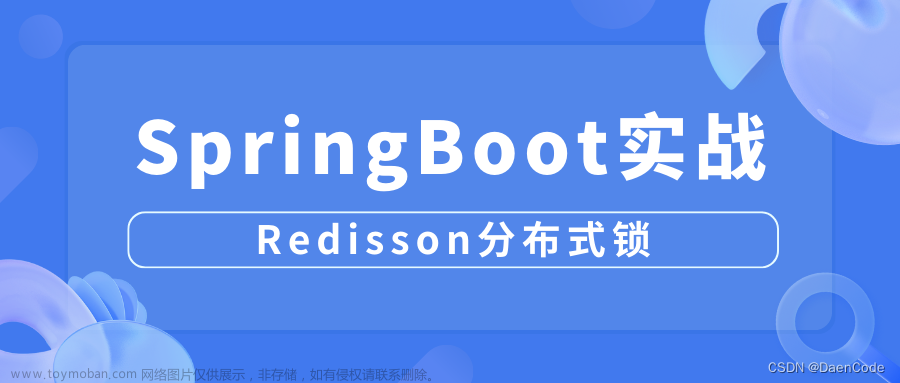入口org.redisson.api.RedissonClient
@Resource
private RedissonClient redissonClient;
...
RLock rLock = redissonClient.getLock(lockName);
lockName就是保存到Redis里面的key
进入org.redisson.Redisson.getLock
@Override
public RLock getLock(String name) {
return new RedissonLock(commandExecutor, name);
}
进入org.redisson.RedissonLock
直接进行构建方法里面的super(commandExecutor, name);
public RedissonBaseLock(CommandAsyncExecutor commandExecutor, String name) {
super(commandExecutor, name);
this.id = getServiceManager().getId();
this.internalLockLeaseTime = getServiceManager().getCfg().getLockWatchdogTimeout();
this.entryName = id + ":" + name;
}
org.redisson.connection.ServiceManager:private final String id = UUID.randomUUID().toString();- 这个
id就是UUID:this.id = getServiceManager().getId();- 这个entryName通过UUID可以区分是哪个应用实例
- entryName+threadId可以区分哪个应用实例的哪个进程持有锁
rLock.tryLock(60, TimeUnit.SECONDS);
尝试获取锁文章来源:https://www.toymoban.com/news/detail-501055.html
进入org.redisson.RedissonLock
<T> RFuture<T> tryLockInnerAsync(long waitTime, long leaseTime, TimeUnit unit, long threadId, RedisStrictCommand<T> command) {
return commandExecutor.syncedEval(getRawName(), LongCodec.INSTANCE, command,
"if ((redis.call('exists', KEYS[1]) == 0) " +
"or (redis.call('hexists', KEYS[1], ARGV[2]) == 1)) then " +
"redis.call('hincrby', KEYS[1], ARGV[2], 1); " +
"redis.call('pexpire', KEYS[1], ARGV[1]); " +
"return nil; " +
"end; " +
"return redis.call('pttl', KEYS[1]);",
Collections.singletonList(getRawName()), unit.toMillis(leaseTime), getLockName(threadId));
}
Collections.singletonList(getRawName()),这个参数就是Redis的keyunit.toMillis(leaseTime),这个参数是Lua脚本的第1个参数,即ARGV[1]getLockName(threadId),这个参数是Lua脚本的第2个参数,即ARGV[2]- 这段Lua脚本的含义解析
(redis.call('exists', KEYS[1]) == 0),锁不存在or (redis.call('hexists', KEYS[1], ARGV[2]) == 1)),锁存在,但是当前实例线程拥有该锁- 以上两种情况,均代表加锁成功,则返回null
- 否则返回这个锁对应的TTL时间
- 所以外层调用的地方是根据返回的ttl是否为null来判断加锁是否成功
Long ttl = tryAcquire(waitTime, leaseTime, unit, threadId);
// lock acquired
if (ttl == null) {
return true;
}
进入Lua脚本的第2个参数getLockName
protected String getLockName(long threadId) {
return id + ":" + threadId;
}
这个id就是上面提到的UUID,结合线程ID,可以判断是哪个应用实例的哪个进程持有锁文章来源地址https://www.toymoban.com/news/detail-501055.html
到了这里,关于【Redisson】分布式锁源码分析如何实现多个应用实例互斥的文章就介绍完了。如果您还想了解更多内容,请在右上角搜索TOY模板网以前的文章或继续浏览下面的相关文章,希望大家以后多多支持TOY模板网!










